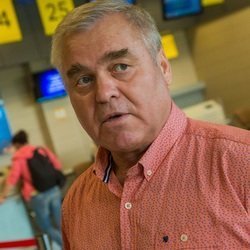“We will fly anyway!”: Tatarstan might need half a billion for subsidies of regional aviation
Federal authorities are discussing the possibility of refusal to support regional flights with low traffic, including from Kazan
A long-term federal programme subsidising flights, which has been operating between the federal centre and Russian regions on equal terms for six years, can come to an end. The Ministry of Transport of Russia has created completely new financing rules, according to which the federal budget stops covering 50% of costs and offers regions to carry 100% of expenses. Tatarstan airlines have been hostile to this idea, however, Minister of Transport of Tatarstan Lenar Safin assured Realnoe Vremya that regardless of the federal decisions the republic would keep subsidising the current network of 25 flights across the country. This might need half a billion rubles.
To eliminate federal component in flights
The rules of budget subsidies of regional flights, which have been operated with 225 destinations in circumvention of Moscow and regulated by a special decree of the Russian government (No. 1242 as of 25.12.2013), are going to change next year. But this refers to subsidised flights to the Far East, Crimea and Kaliningrad. Instead, the Ministry of Transport of Russia created a new project of the decree, which might cut the wings of 10 Russian airlines, which have worked with this interregional programme since 2013. Such a change could reduce the wide network of flights over the main territory of Russia.
The evaluation of the project of the Russian government’s decree named On Adoption of Rules to Provide and Distribute Interregional Transfers from the Federal Budget to Budgets of Russian Regions to Finance Local Flights to the Population and Expand the Flight Map of Local Flights has recently ended on the website of regulations of the Russian government. It is introducing completely new approaches to distribute interregional transfers to compensate for flight costs. The document was uploaded on 9 September.
The key novelty is to offer the regions to bear full financing of local regional flights. “The cap for co-financing of costs of Russian regions is fixed as 100%,” the clause 9 of the decree reads.
The costs have been split the following way until now: the Russian budget had 50%, the other 50% were split equally between Russian regions (for instance, for the direct flight Kazan — Samara — Kazan two years ago, each of the two neighbouring regions spent 12 million rubles, while the federal budget did 24 million rubles). So as a result of the adoption of this legal norm, the federal component in the financing of the regional flight programme can disappear, while the costs will completely fall on regions’ budgets. The exact sum of the sources isn’t mentioned in the documents, but by experts’ estimates, it could be billions of rubles.
Regions will have to defend application post factum
However, intergovernmental transfers aren’t excluded. As it is said in the preamble of the decree’s project, the new rules “set goals, conditions and the order of providing and distributing intergovernmental transfers from the federal budget to the Russian regions’ budgets to finance local flights for the population and expanding the destination network of local flights within the federal project Reconstruction of Infrastructure of Regional Airports and Expansion of Flight Map.
But we must understand that it is supposed to give subsidies not automatically, as it was before, but upon reaching certain indicators in flights. This means that financial support from the federal budget will come after the end of the accounting period and the region will have to defend the budget application to compensate for the losses.
“The achievement of the indicator of aviation mobility of the population established by the federal project’s passport is the characteristic of the result of the measures that have been taken,” the document reads. “The evaluation of the efficiency of intergovernmental transfers is conducted by the Federal Air Transport Agency by comparing planned and real numbers of the mentioned indicators.”
The main condition to get such subsidies for a region of the federation is to have a legal act on establishing a list of measures the money will be sent for and to have money in the regional budget to meet the spending obligation, which is co-financed by intergovernmental transfers, the volume needed to meet it and including the amount of other intergovernmental transfers planned to be received from the federal budget. According to the document, the preparation of proposals for the distribution of intergovernmental transfers in 2021 and 2022 will be carried out by the Russian Air Transport Agency considering the annual analysis of results of the measures provided by the regions. “If by 31 December a Russian region hasn’t achieved the results in the federal project established by agreement until 1 May, next year the money is to be given back to the federal budget,” the document notes.
It is unknown when the new rules come into force. “The project of the document is going through an anti-corruption evaluation. In this respect, it is so far early to talk about when it comes into force,” Realnoe Vremya was said in the press service of the Russian Ministry of Transport.
Almost a million passengers flew in programme
The Russian Air Transport Agency didn’t participate in the creation of the new document, this is why it doesn’t consider it is possible to comment on its key points,” Realnoe Vremya was stated in the press service of the ministry. Meanwhile, the numbers suggest that the programme of regional flights cover more and more regions. According to official data, almost a million people were transported in January-July 2019 in the regional flight subsidisation programme or, more precisely, 985,600 passengers. “This indicator is three times higher than last year’s one for the analogous period, 333,200 passengers,” it was noted in the press service of the Russian Air Transport Agency. And it added that the programme included 226 subsidised flights. About 10 Russian airlines operate flights in this programme. Siberia, RusLine, Angara, Yamal, KrasAvia airlines are among them.
UVT Airlines from Tatarstan has about a one-tenth part of the programme: it accounts for 25 flights, which increase year after year (the federal network included 20 destinations about two years ago). Moreover, UVT Airlines not only flies to central regions of Russia (Kazan-Astrakhan, Kazan-Barnaul, Kazan-Lipetsk) but began to fly to Siberian oil regions a long time ago where passenger traffic doesn’t fall because of oil and gas workers’ rotational schedule. UVT Airlines flies from Kazan to Novy Urengoy, Nizhnevartovsk, Usinsk, Surgut and from Bugulma to Western Siberia. About 20% of the Tatarstan airline’s flight map is subsidised routes.
But there is another airline in Tatarstan — RusLine — that has subsidised flights. It operates flights from Kazan to Kaluga, which are subsidised by both regions, 30,5% each (the Russian budget adds the other 39%) and Kazan-Lipetsk, which is subsidised in the same proportion.
Regions: our budgets have little money
Regional authorities are concerned about the upcoming fallout of the federal component. “Belgorod Oblast hasn’t participated in the co-financing of regional flights according to the decree No. 1242. We haven’t given subsidies,” the local government said to Realnoe Vremya.
“But we would like to launch flights to Saint Petersburg and Kaliningrad next year. Both we and you have a complicated situation in the budget today, but we asked for federal financing equal to 50 million rubles to subsidise flights to the enclave to Kaliningrad and 28 million rubles to Saint Petersburg. This is what we want now. But what will happen next? In any case, our budgets have little money,” the government of Belgorod Oblast complains.
According to sources, there were plans for Kazan as well, they used to fly there but then stopped. “We are always up for development. We have to keep the subsidies as it is done in other foreign countries, for instance, in the USA,” the representatives of the region are convinced.
The administration of Altai Krai said that the subsidised flight Kazan-Barnaul is in force till the end of the year, time will show what will happen next.
UVT Airlines: these flights will become commercial, while tariffs will grow
“We are familiar with this initiative,” Director General of UVT Airlines Pyotr Trubayev commented on the prepared changes in a talk with Realnoe Vremya. “Moreover, we participate in a meeting about it. But this is so far under discussion, though the approach itself is alarming. Take subsidised regions, they won’t have a chance to give subsidies to flights.”

And he immediately disagrees that if there aren’t subsidised tariffs, while the flight has been operated for long, airlines will have to launch a commercial flight.
“But then the tariff will be different, it will be more expensive, of course,” he believes. “Consequently, it can bring to an outflow of passenger traffic, which will make the flight unprofitable, and it will be removed from the flight map. And it is a bad scenario,” he says.
However, the director of the airline found it hard to forecast how much the route network of UVT Airlines would reduce, as the position of the Tatarstan Ministry of Transport remained unknown.
We will fly anyway!
Despite Moscow debates at the top, Tatarstan will keep the regional flight network without depending on if there will be federal co-financing in the future or it will be cancelled. As Minister of Transport and Road of Tatarstan Lenar Safin stated, “in case federal authorities make a decision to subsidise flights without the federal component, there will be considered conservation of the geography of subsidised flights based on possibilities of the budget of the Republic of Tatarstan”.
“Tatarstan actively participated in the subsidisation of flights, this year 25 routes from the airports of the Republic of Tatarstan are subsidised. In 2020, it is planned to keep subsidising the flights at the level of 2019 with co-financing from the federal budget,” Realnoe Vremya was said in the press service of the Ministry of Transport of Tatarstan. It is unclear what money will be included in the budget. By preliminary estimates, about 500 million rubles will be needed for this.
